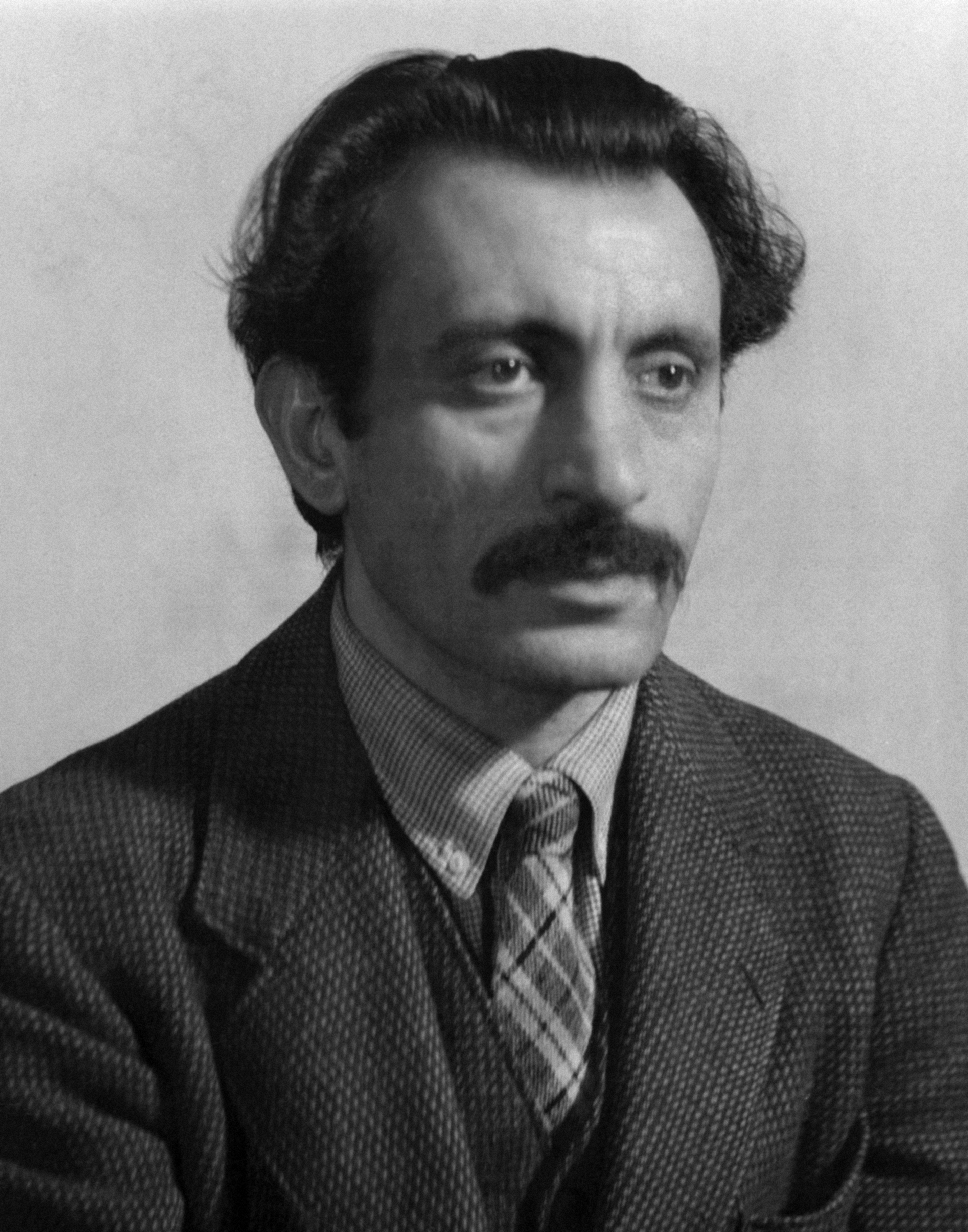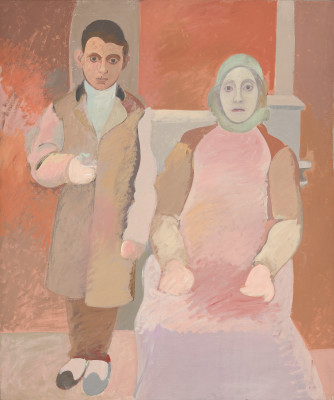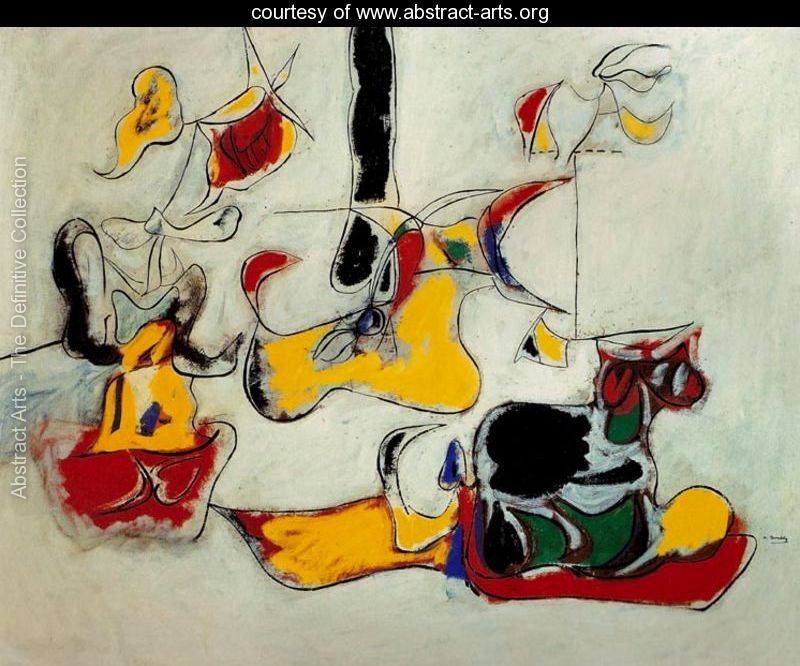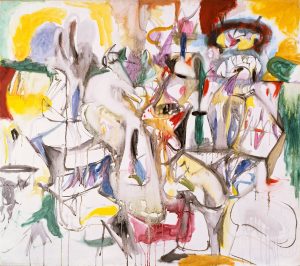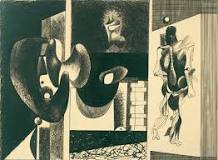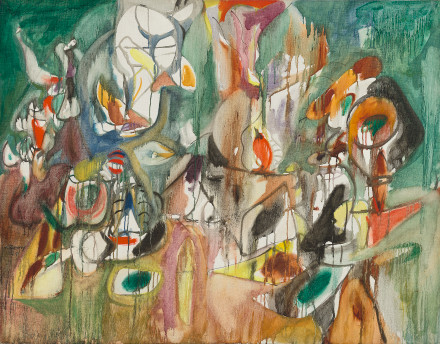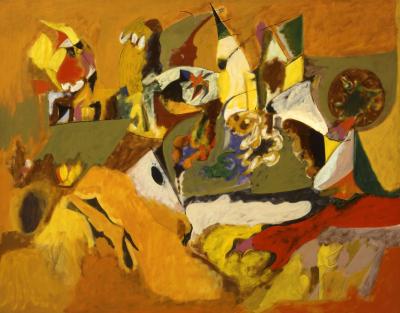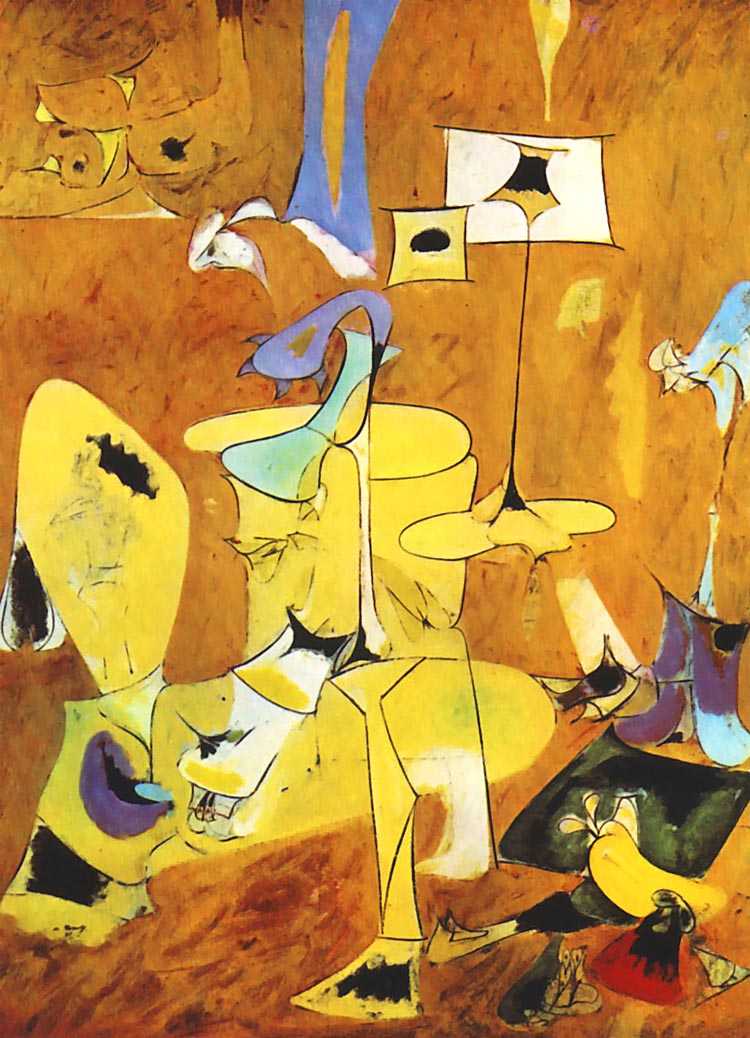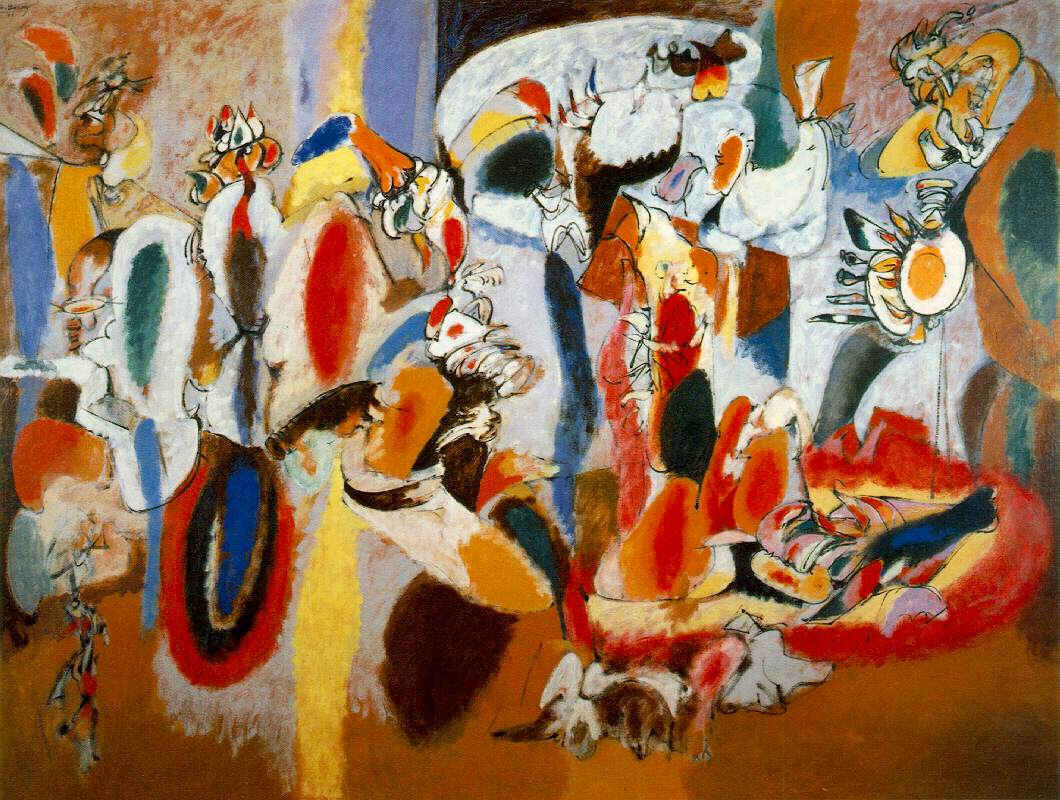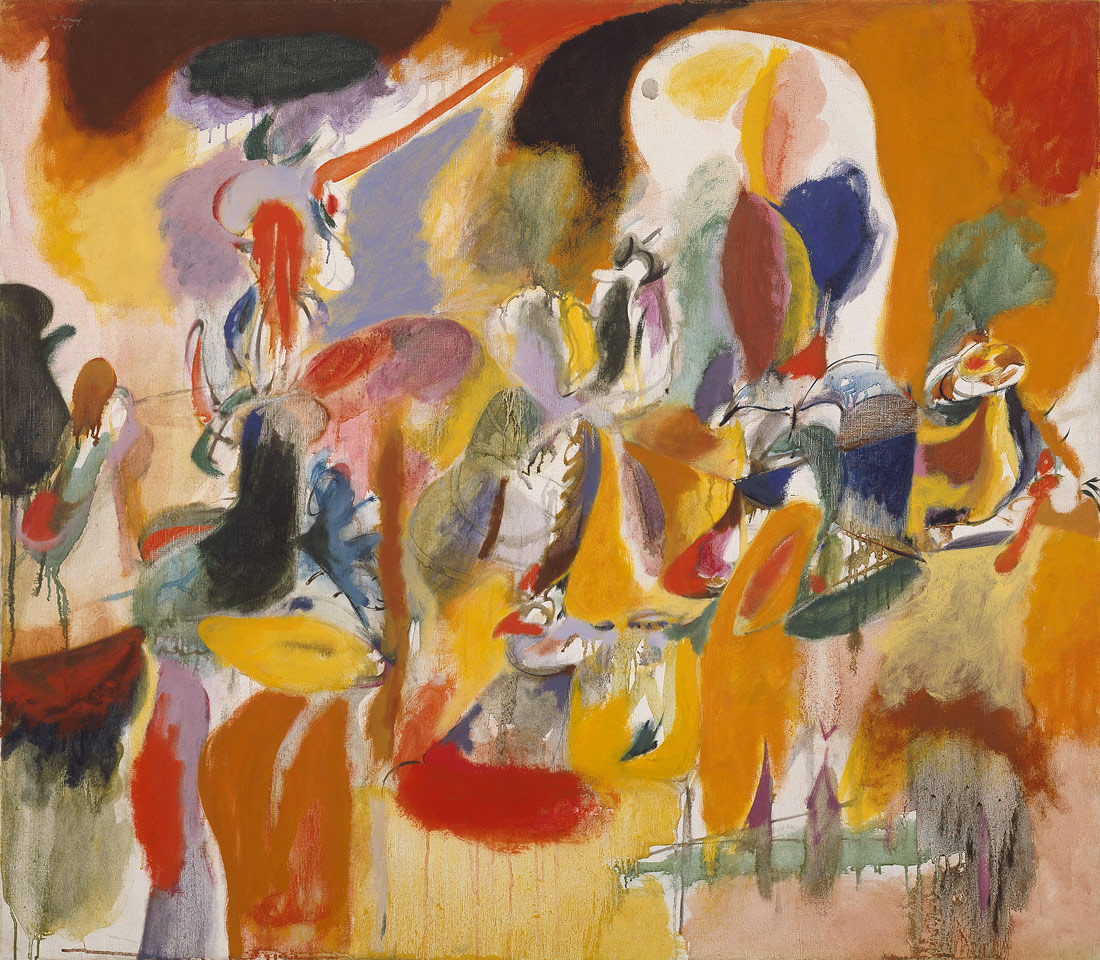- Overview
-
Arshile Gorky born April 15, 1904 – July 21, 1948) was an Armenian-American painter, who had a seminal influence on Abstract Expressionism. He spent most his life as a national of the United States. Along with Mark Rothko, Jackson Pollock and Willem de Kooning, Gorky has been hailed as one of the most powerful American painters of the 20th century. As such, his works were often speculated to have been informed by the suffering and loss he experienced in the Armenian Genocide.
- Career
-
- Arshile Gorky settled in New York in 1924, and enrolled in the National Academy of Design and the Grand Central School of Art. Later, by 1925 he became an instructor at the Grand Central School of Art and taught there till 1931.
- He received minimal formal training and was primarily self- taught, observing works at museums, galleries and reading magazines and books on art. By doing so he became accustomed to the avant-garde European art and went on to learn more about its pioneers such as Pablo Picasso, Paul Cézanne, and Joan Miró.
- At the beginning of his career, he was influenced by the works of ‘Impressionists’. But towards the end of the 1920s his art style shifted to be more ‘postimpressionist’.
- Most noted works during this period were ‘Landscape, Staten Island’ (1927–1928), ‘Landscape in the Manner of Cézanne’ (1927). Towards the end of the 1920s and beginning of the next decade, he began experimenting with cubism and later moving on to surrealism.
- He faced criticism from his peers who said his work lacked originality. Nevertheless, Arshile Gorky emphasized the significance of preserving and carrying forward tradition and stated that any artist can grow only after a period of apprenticeship.
- In 1931, his works were exhibited and sold at the Down Town Gallery in New York. Two years later, in 1933, he was among the initial artists to be hired by Works Progress Administration Federal Art Project. Other artists like mark Rothko, Jackson Pollock, Lee Krasner and Alice Neel were later employed in the project.
- In 1935, he signed a 3 year deal with the Guild Art gallery, which was cofounded by Margaret Lefranc and Anna Walinska. The gallery arranged his debut solo exhibition for his work ‘Abstract Drawings by Arshile Gorky’. Among the paintings he worked during this phase include the works ‘Nighttime, Enigma, Nostalgia’ (1930–1934), which were a series of paintings.
- During the early 1940s, he was well-known in the artistic scene at New York and this gave him the opportunity to get acquainted with members of the Surrealist Group of artists; a group of artists who were on exile from Europe.
-
He was very much influenced by the works of his friend André Breton along with other surrealist artists such as Roberto Matta, who helped in nurturing his mature style by encouraging him to work with biomorphic patterns. Roberto Matta also introduced him to the technique of automatic drawing. These influences are visible in many paintings created by him during the early 1940s especially in ‘The Liver is the Cock's Comb’.
- Arshile Gorky settled in New York in 1924, and enrolled in the National Academy of Design and the Grand Central School of Art. Later, by 1925 he became an instructor at the Grand Central School of Art and taught there till 1931.
- Legacy
-
Arshile Gorky was known to have proposed his muse, artist Corinne Michelle West multiple times for marriage but she refused.
In 1941, he married Agnes Magruder, daughter of Admiral John H. Magruder. The couple had two daughters, Maro and Yalda. Yalda was later renamed Natasha. In 1946, Agnes Magruder was romantically involved with artist Roberto Matta and two years later she left with her kids and married British writer Xan Fielding.
Arshile Gorky faced multiple catastrophes in 1946, when his studio was burnt down, and the same year he had to undergo a painful colostomy surgery for rectal cancer. Two years later, he met with an accident, which temporarily paralyzed his painting arm.
On July 21, 1948, Arshile Gorky hanged himself to death at Sherman, Connecticut. He was 44 years when he died. In 2005, his family formed a non-profit corporation named the ‘Arshile Gorky Foundation’ to talk about the life, achievements and works of the artist.
- On View
-
- Museum of Modern Art, New York City
- San Francisco Museum of Modern Art, San Francisco

